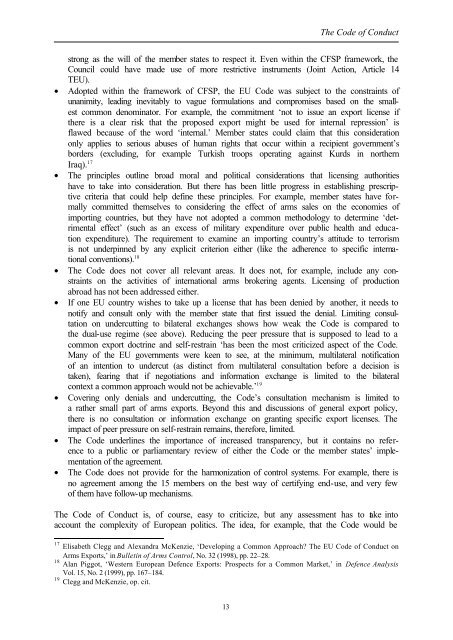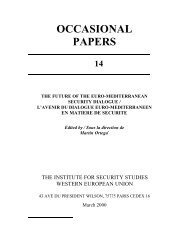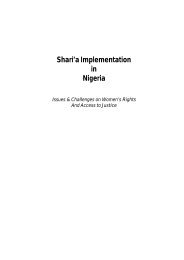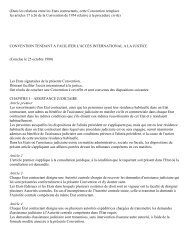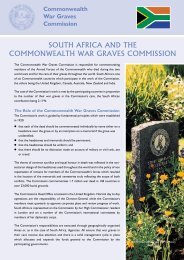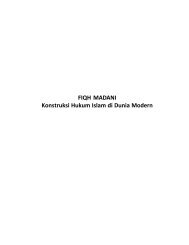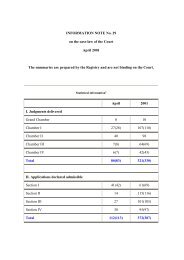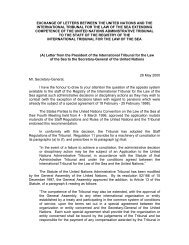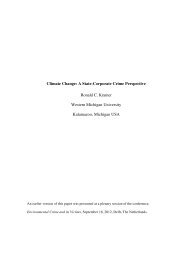A common European export policy for defence and dual-use items?
A common European export policy for defence and dual-use items?
A common European export policy for defence and dual-use items?
Create successful ePaper yourself
Turn your PDF publications into a flip-book with our unique Google optimized e-Paper software.
The Code of Conduct<br />
strong as the will of the member states to respect it. Even within the CFSP framework, the<br />
Council could have made <strong>use</strong> of more restrictive instruments (Joint Action, Article 14<br />
TEU).<br />
• Adopted within the framework of CFSP, the EU Code was subject to the constraints of<br />
unanimity, leading inevitably to vague <strong>for</strong>mulations <strong>and</strong> compromises based on the smallest<br />
<strong>common</strong> denominator. For example, the commitment ‘not to issue an <strong>export</strong> license if<br />
there is a clear risk that the proposed <strong>export</strong> might be <strong>use</strong>d <strong>for</strong> internal repression’ is<br />
flawed beca<strong>use</strong> of the word ‘internal.’ Member states could claim that this consideration<br />
only applies to serious ab<strong>use</strong>s of human rights that occur within a recipient government’s<br />
borders (excluding, <strong>for</strong> example Turkish troops operating against Kurds in northern<br />
Iraq). 17<br />
• The principles outline broad moral <strong>and</strong> political considerations that licensing authorities<br />
have to take into consideration. But there has been little progress in establishing prescriptive<br />
criteria that could help define these principles. For example, member states have <strong>for</strong>mally<br />
committed themselves to considering the effect of arms sales on the economies of<br />
importing countries, but they have not adopted a <strong>common</strong> methodology to determine ‘detrimental<br />
effect’ (such as an excess of military expenditure over public health <strong>and</strong> education<br />
expenditure). The requirement to examine an importing country’s attitude to terrorism<br />
is not underpinned by any explicit criterion either (like the adherence to specific international<br />
conventions). 18<br />
• The Code does not cover all relevant areas. It does not, <strong>for</strong> example, include any constraints<br />
on the activities of international arms brokering agents. Licensing of production<br />
abroad has not been addressed either.<br />
• If one EU country wishes to take up a license that has been denied by another, it needs to<br />
notify <strong>and</strong> consult only with the member state that first issued the denial. Limiting consultation<br />
on undercutting to bilateral exchanges shows how weak the Code is compared to<br />
the <strong>dual</strong>-<strong>use</strong> regime (see above). Reducing the peer pressure that is supposed to lead to a<br />
<strong>common</strong> <strong>export</strong> doctrine <strong>and</strong> self-restrain ‘has been the most criticized aspect of the Code.<br />
Many of the EU governments were keen to see, at the minimum, multilateral notification<br />
of an intention to undercut (as distinct from multilateral consultation be<strong>for</strong>e a decision is<br />
taken), fearing that if negotiations <strong>and</strong> in<strong>for</strong>mation exchange is limited to the bilateral<br />
context a <strong>common</strong> approach would not be achievable.’ 19<br />
• Covering only denials <strong>and</strong> undercutting, the Code’s consultation mechanism is limited to<br />
a rather small part of arms <strong>export</strong>s. Beyond this <strong>and</strong> discussions of general <strong>export</strong> <strong>policy</strong>,<br />
there is no consultation or in<strong>for</strong>mation exchange on granting specific <strong>export</strong> licenses. The<br />
impact of peer pressure on self-restrain remains, there<strong>for</strong>e, limited.<br />
• The Code underlines the importance of increased transparency, but it contains no reference<br />
to a public or parliamentary review of either the Code or the member states’ implementation<br />
of the agreement.<br />
• The Code does not provide <strong>for</strong> the harmonization of control systems. For example, there is<br />
no agreement among the 15 members on the best way of certifying end-<strong>use</strong>, <strong>and</strong> very few<br />
of them have follow-up mechanisms.<br />
The Code of Conduct is, of course, easy to criticize, but any assessment has to take into<br />
account the complexity of <strong>European</strong> politics. The idea, <strong>for</strong> example, that the Code would be<br />
17 Elisabeth Clegg <strong>and</strong> Alex<strong>and</strong>ra McKenzie, ‘Developing a Common Approach? The EU Code of Conduct on<br />
Arms Exports,’ in Bulletin of Arms Control, No. 32 (1998), pp. 22–28.<br />
18 Alan Piggot, ‘Western <strong>European</strong> Defence Exports: Prospects <strong>for</strong> a Common Market,’ in Defence Analysis<br />
Vol. 15, No. 2 (1999), pp. 167–184.<br />
19 Clegg <strong>and</strong> McKenzie, op. cit.<br />
13


